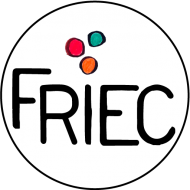A review of Tim Ingold‘s lecture event “The Sustainability of Everything” at the Centre for Human Ecology, Pearce Institute, Glasgow, Scotland
Sustainability is an overused word.
It is much diminished by its occurrence in too many documents purporting to suggest that transport, local government or this tea or those coffee beans are “sustainable”. Grant applications ask how the project will be “sustainable” after the funding period. But we know that sustainability matters: we need to understand how to live without compromising the lives of future generations. Whether we subscribe to “business as usual, but greener” or the more radical “accelerationism” or “degrowth”, there are alternative ways of thinking about sustainability.
“Tim Ingold’s approach to sustainability opens up new ways of experiencing and knowing which are more process- than object-oriented.”
The provocative phrase “sustainability of everything”, the title of Tim Ingold’s talk, came from being asked to address sustainability in relation to art and science, citizenship and democracy, love and friendship. Ingold used “everything”, including qualities and processes, as a way to open up a trenchant criticism of not merely the usage of sustainability, the word, but more widely, the focus on thinking of sustainability in terms of stocks rather than processes.
Tim Ingold is Professor of Anthropology at the University of Aberdeen. He is known for his distinctive arts-and-humanities inflected approach to anthropology, and is currently leading “Knowing from the Inside”, a major European Research Council funded project involving anthropologists, archaeologists, architects and artists. For Ingold the question of sustainability is not “How can we carry on doing what we are doing but with a bit less waste and impact?” but rather “What kind of world has a place for us and future generations?” “What does “carrying on” mean?” and, more practically speaking, “How do we make it happen?”

“Everything”, in Ingold’s sense, is not the collection of all the individual bits, but something different. He contends that the problem with current science and current constructions of sustainability is their reliance on isolating something to analyse it. Ingold comes at things looking for movement and entanglement rather than boundary. To make this point he regularly uses examples where either one doesn’t know where one thing ends and another starts, or examples of things in motion. He asks, for instance, whether the bird’s nest is part of the tree? Or whether the wind that has made the tree grow bent over is part of the tree? He asks if you can tell which part of the eddy in the stream is the “inside” and which is the “outside”? Of course, for artists, relationships between elements are at the heart of the process of composition. Artists’ process of composition explores exactly this sense of “what needs to be included” for something to “make sense”.
The importance of this approach, which highlights entanglements, is that it opens up new ways both of experiencing and knowing which are more process-oriented rather than object-oriented. Artists, in particular, respond enthusiastically to this way of knowing.
In his talk, Ingold developed this thread further, using Lucretius’ idea that everything is in motion, and when things bump into each other, they form knots—clouds are knots of water and temperature and wind. Trees are complex knots. Ingold evolves the idea of knots by pointing out that rope stays together through a combination of twist and friction. He notes that harmony (e.g. in polyphonic music) is a human creation making use of the principle—a combination of elements that in themselves might initially appear to be in conflict, but in relationship with each other are beautiful. Here again, he’s nodding to artists’ ways of knowing. In his terms, everything is a “correspondence of parts”—not a totality, but rather a carrying on.
In essence, Ingold is offering an indigenous ecological philosophy (based on his field work with the Sami)—his anthropology has moved beyond documenting and understanding indigenous world views to embracing them as a way of knowing and being in the world.
To fully understand the implications of his process-oriented view of entanglement, it’s worth reading Barry Lopez’s “The Invitation”. Lopez articulates the immersion of indigenous people he has travelled with, beautifully describing encounters with bears and how his companions experience the unfolding of events; the bear is not an object to be viewed, but rather almost a field of influence which extends temporally and spatially.
After setting up this alternative way of understanding, Ingold highlighted how current formulations of sustainability are underpinned by an assumption that the “entire Earth is a standing reserve” and that we need to protect the Earth in the way that a company protects its profits. He drew attention to the underlying corporate or management language implicit in these descriptions of sustainability and how this is true of conservation organisations as much as corporations and governments. Furthermore, of course, Paulo Friere provided a deep critique of the “banking” model of education, which is closely aligned with this accounting version of sustainability.
Having established what he meant by “everything”, Ingold went on to construct an idea of “carrying on”. To do this, he referred to traditional ways of forestry in Japan, where there is a dynamic relationship between the forester, the forest, and the building of a house articulated in a 30 year cycle—trees take 30 years to grow, and a house needs to be renewed every 30 years. Trees are planted, foresters learn to build houses, trees are cut to build houses, trees are planted. It is very different from the forms of plantation forestry and clear-felling we experience across much of Scotland.
As he concluded, Ingold came back to the themes of art and science, citizenship and democracy, peace and friendship. He suggested that science has reneged on its commitment to understanding the world in ways that are useful for life, and that in his view environmental arts do this more effectively now. He talked about the need for a politics of difference and the importance of embracing tension and agonism (which emphasizes accepting that struggle and conflict are inherent to politics).
There are a few key points that are worth teasing out of Ingold’s valuable line of argument for reflection.
Firstly, the construction of sustainability currently offered in “sustainable development” and “ecosystems services” is fundamentally human-centric and has lost any connection with the “existence value” of the non-human, as constructed by the likes of Arne Naess, Gregory Bateson, and many others who were early inspirations of the environmental movement (and remain very influential on environmental arts).* Ingold’s focus on entanglement and movement is a useful counter to “banking” approaches. Understanding the world in terms of process rather than focusing on the objects is also characteristic of the arts and, in particular, of environmental arts. So many artists working with the environment make work that is both temporal and temporary, seeking to bring audiences and participants into new relationships with ecologies.
Secondly, we need to recognize that our current construction of sustainability is only one possible construction, built in terms of conventional ethics that are essentially a form of Utilitarianism—seeking to provide the greatest good for the greatest number. In this respect, our current construction suffers from all the criticisms of Utilitarianism in being fundamentally subjective and, in environmental terms, challenging—for example, a simplistic line of thought often promoted by architects and urban planners holds that, if more than half the world’s population lives in cities, then what is good for cities must be good for humans.
The point is that Ingold is providing an underpinning articulation of “being” that asks for a different ethics—one which accepts conflicts, but accords value to the connectedness of everything and its motion. In his talk, he positively argued against the conservation of trees and in favor of the carrying on of planting and growing, felling and building, as a cycle. Perhaps Ingold doesn’t go far enough in focusing on the cyclical relationship—Helen Mayer Harrison and Newton Harrison, eminent ecological artists known as “the Harrisons”, argue that we need to “put more back into ecological systems than we take out” in our carrying on. By this, they mean that we need to positively contribute to ecological cycles, reduce the generation of entropy and work to produce greater biodiversity, strengthening ecological cycles.
Ingold’s construction, particularly of “knots” is useful if we recognise that we humans are arch constructors of knots. Everything we make is some sort of knot, whether it’s food or paths or roads or houses or nuclear power stations or mustard gas or satellites. And if we can imagine a knot, then we will make it. If it’s been imagined, then someone, somewhere, is trying to make it. That’s an interesting ethical dilemma. It’s prompted discussions around what “responsible innovation” might be.
How can we create knots that make for healthier places for all living things?
Chris Fremantle
Ayrshire, Scotland
Video of Tim Ingold’s talk held at the Centre for Human Ecology on 10 September 2016.
Footnotes:
*I’m indebted to Dave Pritchard for elucidating this evolution through the sequence of major environmental summits starting in Stockholm in 1972 and progressing in 10 yearly intervals through to Rio+20 in 2012. He correlated this process with the shift from an environmentalism of “existence value” through to “ecosystem services” and “sustainable development”. Each Summit sought to achieve greater policy impact and, as a result, Pritchard suggests each Summit can be understood as a step away from intrinsic values towards utilitarian and anthropocentric policy.


